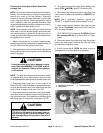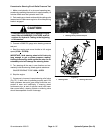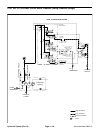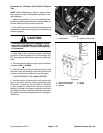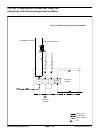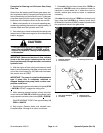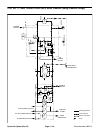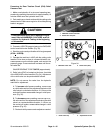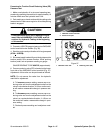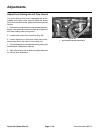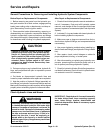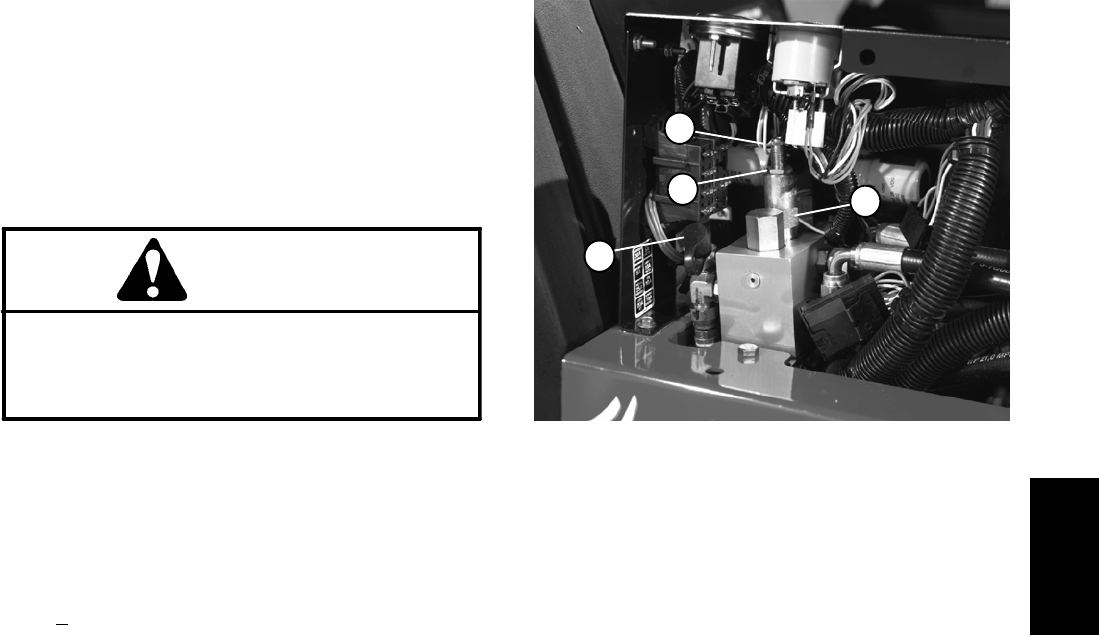
Groundsmaster 4000--D Hydraulic System (Rev. B)Page 4 -- 43
Procedure for Counterbalance Pressure Test
1. Make sure hydraulic oil is at normal operating tem-
perature by operating the machine for approximately 10
minutes. Make sure the hydraulic tank is full.
2. Park machine on alevel surface withthe cutting units
lowered and off. Make sure engine is off and the parking
brake is engaged.
CAUTION
Prevent personal injury and/or damage to equip-
ment. Read all WARNINGS, CAUTIONS, and Pre-
cautions for Hydraulic Testing at the beginning
of this section.
3. Determine system charge pressure (see TEST NO.
1: Traction Circuit Charge Pressure in this chapter).
4. Connect a 1000 PSI gauge to counterbalance test
port on manifold under console (Fig. 32).
5. Start the engine and put throttle at full engine speed
(2730 +
30 RPM) with no load onthe system. Do not en-
gage the cutting units.
GAUGEREADINGTOBE220 PSI (15.2 bar) over
system charge pressure (e.g. if charge pressure is
250 PSI, counterbalance pressure should be 470
PSI).
6. Adjustment of the counterbalance valve can be per-
formed as follows:
NOTE: Do not remove the valve from the hydraulic
manifold for adjustment.
A. Loosen locknut on counterbalance v alve (Fig.
32).
B. To increase pressure setting, turn the adjust-
ment screw on the valve in a clockwise direction. A
1/8 turnon the screwwill make a measurable change
in counterbalance pressure.
C. To decrease pressure setting, turn the adjust-
ment screw on the valve in a counterclockwise direc-
tion. A 1/8 turn on the screw will make a measurable
change in counterbalance pressure.
D. Tighten locknut to secure adjustment. Check
counterbalance pressure and readjust as needed.
1. Counterbalance test port
2. Counterbalance valve
3. Locknut
4. Adjusting screw
Figure 32
2
1
3
4
Hydraulic
System



